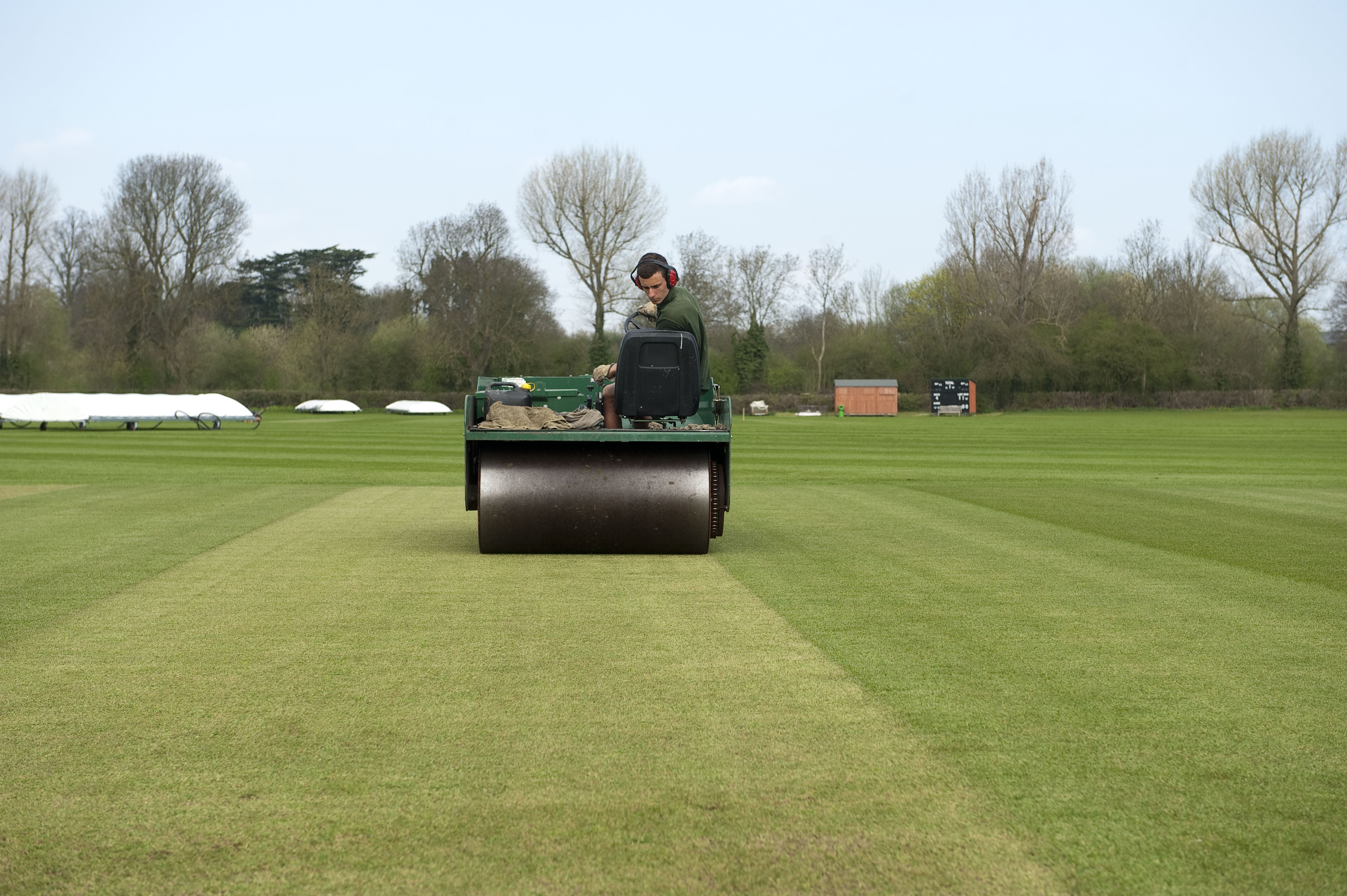Rolling should start when the soil is moist enough for the roller to have an effect, but dry enough to take the roller without discolouring the leaf, or significantly marking or creasing the soil (slight creasing of the soil that immediately rolls out with subsequent passes is acceptable). If the roller marks the grass leaf or creases the soil, then it is too wet and must be allowed more time to dry.
A good test for assessing when moisture content is right to start rolling is ‘The Rule of Thumb’: press the soil with your thumb, you should be able to make a slight depression, but your thumb should not come away wet. It will be possible to roll in wetter conditions with a light roller than with a heavy roller.
Rolling should take place as evenly as possible over the whole pitch in the direction of play. Once the same piece of ground has had around four to six passes (from one end to the other and back again is a pass), then the roller will have done its job and the pitch must be allowed time to dry before the next rolling session. Depending on the time of year, this drying may be several hours, or it could be more than a day. Rolling more than this in one session will be a waste of time. If you want to do more rolling, do more sessions with drying in between, not more passes in a session.
For most ride-on cricket rollers, a rolling session is around 20-30 minutes of rolling. Speed is not very important (within reasonable limits) and a reasonable aim is to one end and back in one to two minutes.
If you are time limited, then look to fit in what you can around your time and fixtures – a bit of rolling every day or every other day is usually more effective than spending all day for one day on the roller.
The amount of rolling needed will depend on how successful pre-season rolling has been, the type of roller, the type of soil and how quickly the pitch dries.
For a more in-depth look at rolling – see our additional information on rollers and rolling.
Rolling Cricket Pitches | Grounds Management Toolkit (thegma.org.uk)


 Tweet
Tweet